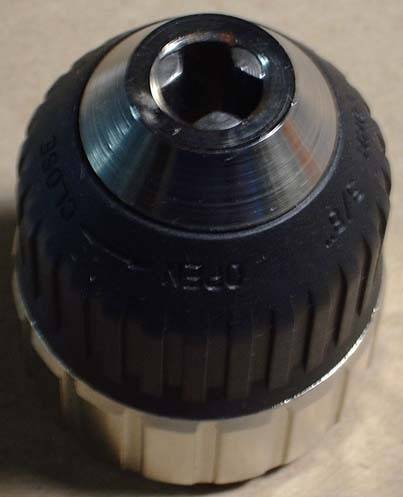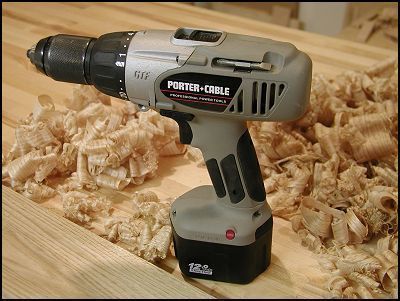No matter which sort of DIY projects are your forte, eventually you’ll need to drill a hole in them and screw them to something else. Enter the Cordless Drill/Driver, the telltale trophy of the true Do-It-Yourselfer, and most people’s entrance into the world of power tools.
When looking to purchase your first drill, or when updating or augmenting an old standby, the number one rule is to buy what you need, or what you think you might need in a year or two. A cordless drill isn’t going to last forever, so there’s no need to buy a super heavy-duty contractor grade to hang a few framed photographs. Likewise, a 9-volt Black and Decker isn’t gonna successfully make its way through exotic hardwoods or ceramics. So, when looking through the options at the hardware store, keep the following things in mind…
For advice on choosing tools, read Power Tools 101: The Right Tool for the Job.
The Chuck. The chuck is the clamping mechanism that keeps bits in place when rotating. Drill chucks are ‘three jaws’ (well, at least 99% of the time), meaning they use three jaws attached to a scroll plate. This design works well to hold on to round and hexagonal bits, and keeps them centered. Look for jaws that are serrated to further decrease slippage.
Most modern drills come with keyless chucks, meaning they can be tightened by hand. There’s no significant reason to buy a new cordless drill that relies on a key. A single-sleeve chuck is a useful feature that allows a keyless chuck to be tightened by one hand. Well-designed chucks use a ratcheting motion to increase the gripping tension as the rotational force – torque – increases.
Most cordless drill drivers have a clutch- those ring of numbers that nobody knows how to use- between the clutch and the body of the drill. The clutch is designed to stop the chuck from turning when it meets resistance, so it doesn’t break the screw head, or drill too deeply. Though some clutches have 22-24 settings, there’s really little difference in the middle ranges, so keep the clutch either high or low.
Chucks usually come in two sizes: 3/8” and 1/2”. Either will work, but a 1/2” is useful, and indicates a more powerful tool. Some drills even have interchangeable chucks: right angle, 1/4”, short nosed, offset models, etc.

Torque is the rotational force that a drill produces. Torque is measured in inch-pounds, or foot pounds, and is denoted by the Greek letter tau. Generally the more torque, the more powerful the drill. This information is often listed on the display cards, so have a look.
Voltage. Unless you expect super high power and to use the drill all day, there’s no need to buy a super high voltage drill, those at 19, 22, or even 32volts. They’re heavier, bulkier, and introduce fatique. A quality 14.4 volt drill will do nicely for 80% of your jobs, and can be accompanied by a meatier corded drill for heavy duty work.
Variable speed drills allow the speed to be infinitely adjusted by how far the drill’s trigger is pulled back. These drills usually have a high-torque start, which helps when starting holes. There’s no significant price increase for a variable speed, and should be considered an essential feature, especially when driving screws.
Batteries are the key component to cordless power tools (duh, Chris). Look for environmentally friendly NiMH (nickel metal hydride) rather than NiCD (nickel cadmium), or the new lightweight, long running Lithium Ion (LiIon). Don’t buy a drill that doesn’t come with at least two batteries, so you’ll always have one ready to use mid-project. Websites and tool packaging often list the charge speed. Look for a charge time of an hour or so; there are after market charges available, some with faster charge times, and many that can charge more than one battery at a time. Also, pay attention to how the battery connects to the drill. Is it too easy to install all catawampus? Is the release button easy to reach?
When running your drill, pay attention to the speed settings and how they affect battery run time. On my drill, I find the high gear and a slower trigger speed works well on my particular drill.
Lastly, if your going to have two of a particular power tool, the drill is a prime candidate (followed closely by the router). When drilling lots of pilot holes for screws, I sometimes wish I had three- one for the bit for pilot holes, one for the counter sink, and one to drive screws. Consider adding one of those choice small, lightweight lithium-ion models if you find that you drive a large amount of screws.
[Images from: sawdustandshavings.com; McCutter.com; thisoldhouse.com
